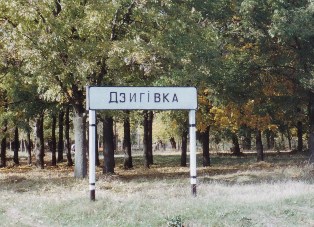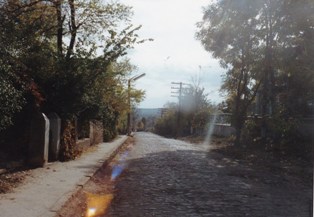|
|
|
Location: Ukraine,
48°22'N 28°20'E. Google
Maps.
Other names:
Dzygovka [Russian], Dzygowka [Polish].
Dzygivka or
Dzyhivka is Ukrainian. [I chose Dzygivka because
that is how my grandmother pronounced it. She would
say, "Zegeefka, Podolia Guberniya".]
Nearest large
city: Vinnitsa
Dzygivka was
a typical shtetl. It is located on
the Korytna River, which flows south to
the Dniester River, which it
joins at the village of Yampol. It is now
part of Vinnitsa Province, but
historically was in the region called
Podolia, which has a rich Jewish history.
We have a document,
translated from Russian, which gives a
history of Jews in Dzygivka. The peak
population was 1897, when 2,187 Jews were
living there, one-third of the total
population of 6,500. In 1889 there were
three synagogues in operation, as well as
a number of religious schools. There may
one or two Jews remaining today.
The shtetl came into existence in the
1600's. In 1787 it was given the right to
hold regular fairs by the Polish king.
These fairs or market days attracted
Jewish shop owners, traders and
professionals, which made possible the
meager existence of the Jewish community.
Eventually there were mills, warehouses, a
bank, and a hospital.
Dzygivka suffered through the formation of
the Soviet Union and its nightmarish
hardships in the 1920's and 1930's.
Soon after the onset of World War II with
the German invasion of June 1941, the
shtetl was turned into a ghetto by the
Nazis and their Rumanian allies. It was
not an outright killing camp, but death
was prevalent from malnutrition and
disease. See more detail in the Holocaust
section.
Michael Maidenberg, the compiler of this
website, visited the shtetl in 1996. His
trip report, A
Journey in Two Worlds, and a
companion video record, Family
History Face to Face, provide an
account of what a once-thriving Jewish
community had become. Please note that
Dzygivka is not the sole focus of either
work.
Related web
sites:
|



